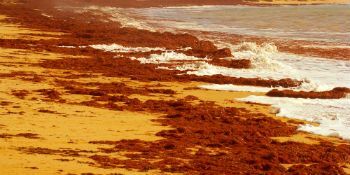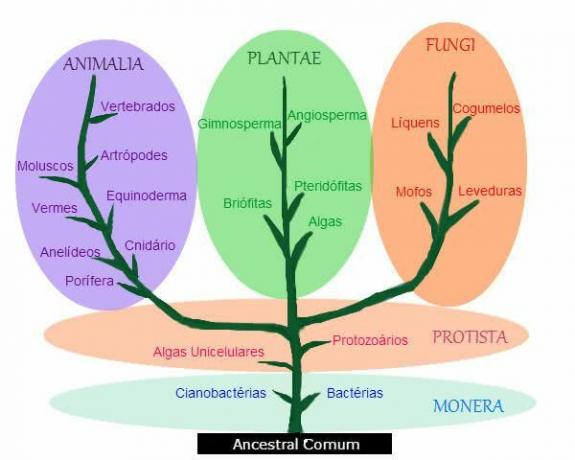Red Tide or Noxious Algae Flowering is a natural phenomenon that occurs in seas and freshwater environments, due to the increased amount of microalgae.
The algae agglomeration is noticed on the water surface by the formation of a large reddish, yellowish, orange or brownish stain.
 Red Tide in a marine environment
Red Tide in a marine environment
Algae involved in red tide
The main algae responsible for the red tide are the dinoflagellates that belong to the division of pyrrophytic algae. The group name derives from the Greek pyrrhophyta, which means fire-colored plant, due to the reddish coloration.
Dinoflagellates are characterized by a unicellular form with two flagella, with different size, function and orientation.
These algae are toxic. Therefore, when this phenomenon occurs, it is recommended not to bathe in the sea or drink water.
In addition to dinoflagellate algae, there is also proliferation of diatoms and cyanobacteria.
The red tide is an example of amensalism. In this type of ecological relationship, an organism releases toxic substances that inhibit the growth or reproduction of other organisms.
In this case, the algae release toxins and harm fish, molluscs and other aquatic organisms.
Remember that algae are part of the Protist Kingdom.
Causes
Red tide is caused by some types of changes in water characteristics, such as:
- Change in salinity and temperature.
- Increased level of nutrients in the water.
The increase in these nutrients and accumulation of organic matter in the water causes several changes in the aquatic flora, called “toxic blooms”. Thus, they consume a large part of the oxygen present in water, and even release toxic substances.
This happens naturally or artificially, mainly due to water pollution by man.
Red tide episodes are increasing around the world. They are closely related to the release of sewage into water, which increases organic matter in aquatic environments, in a process called eutrophication.
Consequences
The negative consequences of the red tide affect the marine environment and man.
In the seas, many fish and other aquatic organisms that feed on the phytoplankton they can die contaminated. This affects the food chain and causes imbalance in the ecosystem.
Human beings who ingest these algae or contaminated animals can suffer from gastrointestinal changes, mucosal and skin irritations, circulatory and respiratory problems.
The red tide can last for weeks, until it disappears completely. During this period, the work of fishermen is also affected, given the mortality and contamination of aquatic animals.
Learn more about Algae.
Red Tide in Brazil
In April 2007, there was a large proliferation of these algae in Bahia de Todos os Santos, in the state of Bahia. This caused the death of several marine species, around 50 tons, causing great ecological and economic damage.
Experts point out that this was one of the biggest environmental disasters in the region. After the phenomenon, fishing was prohibited until the end of the year.



